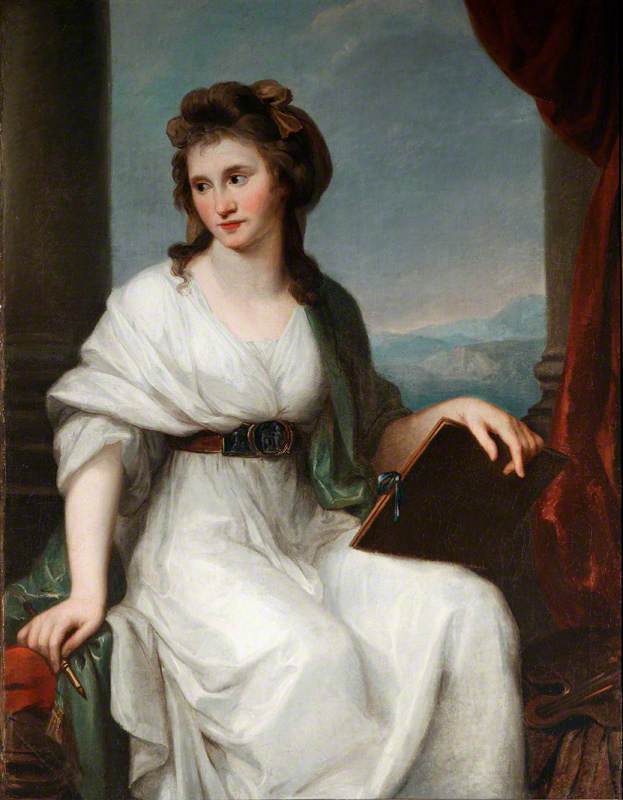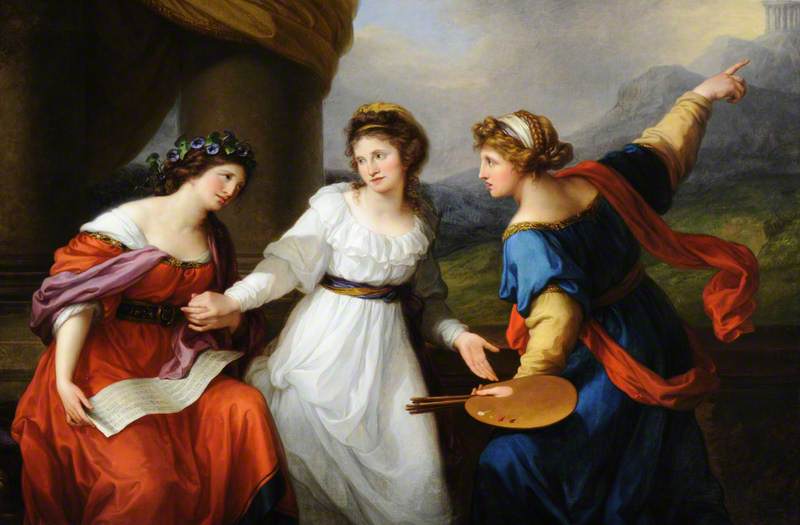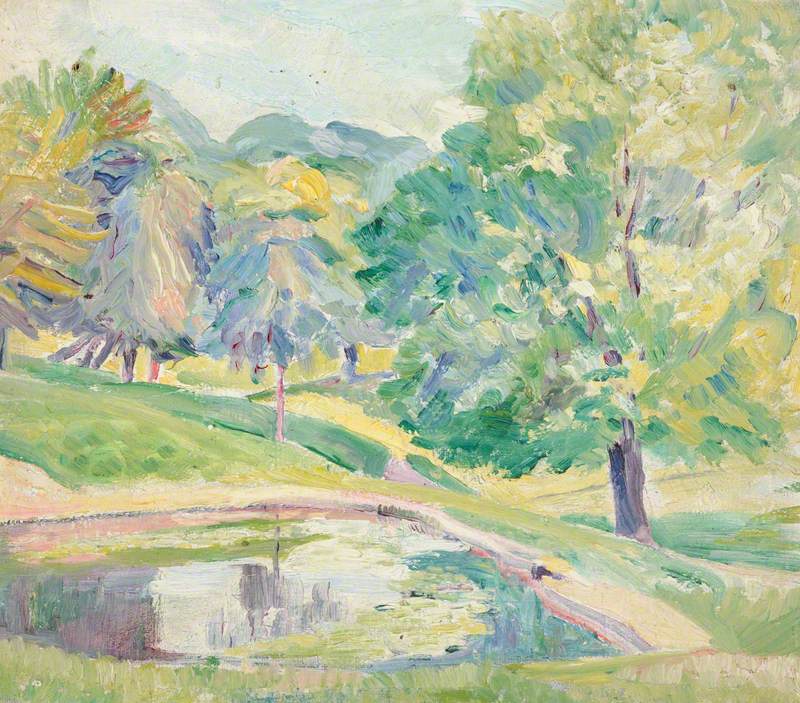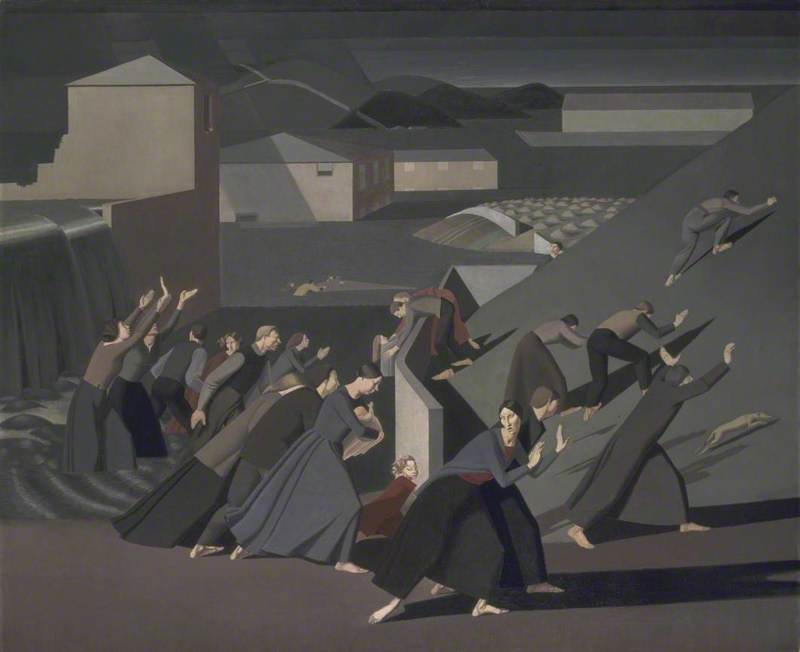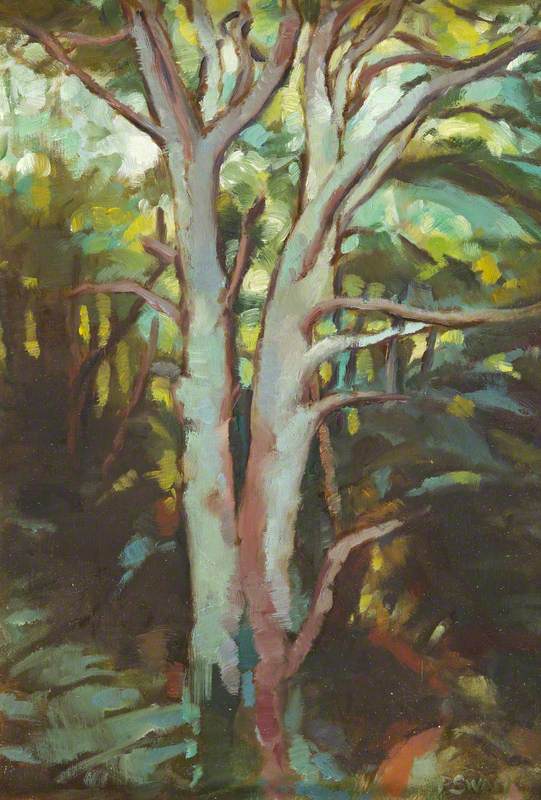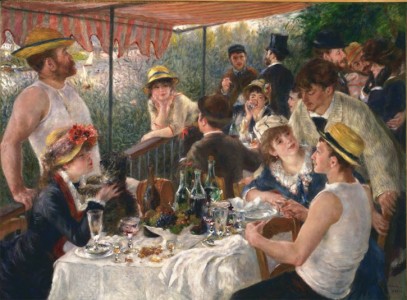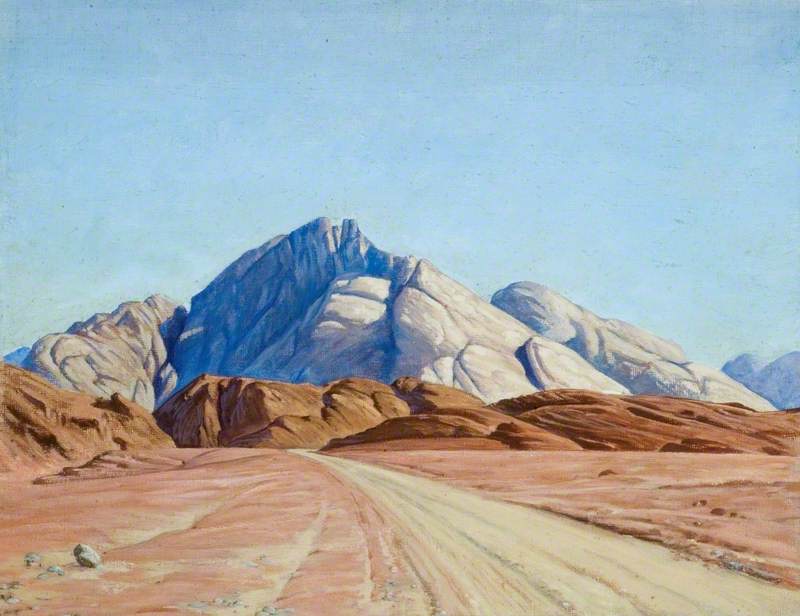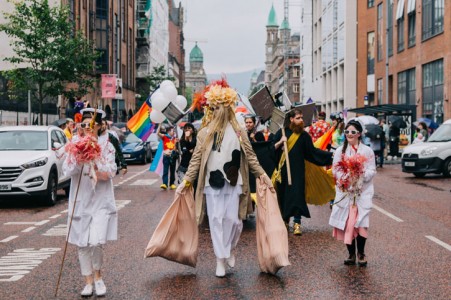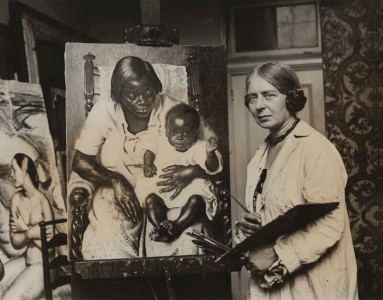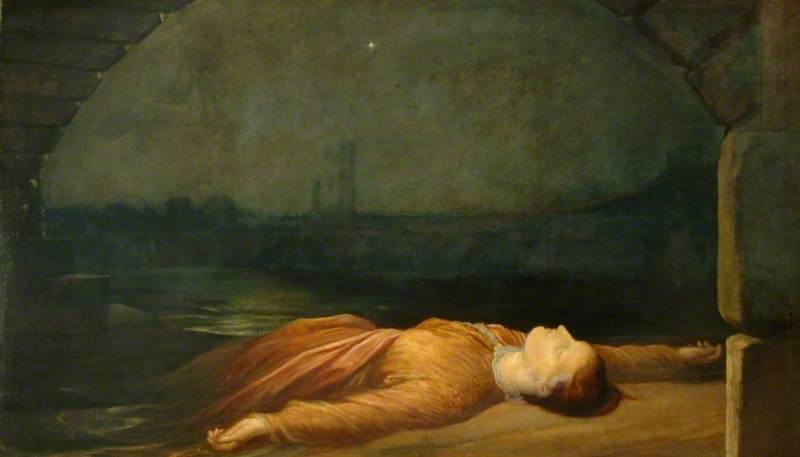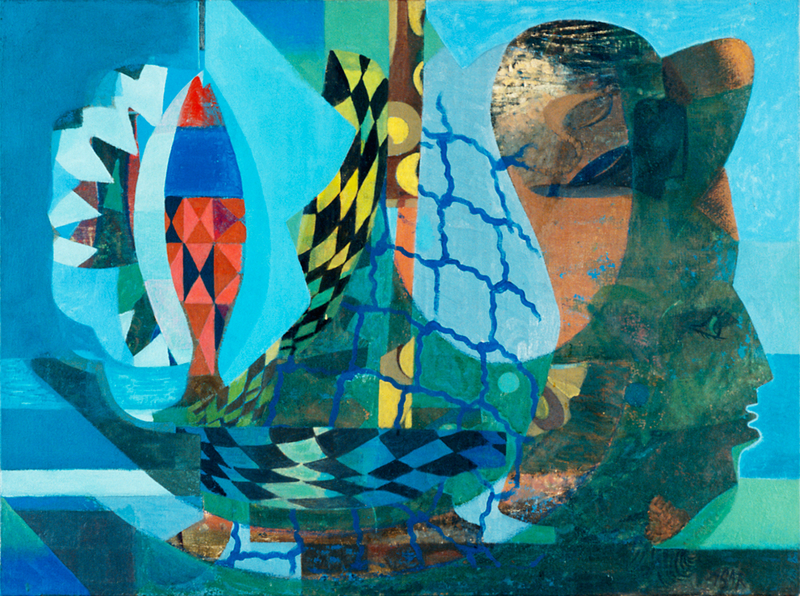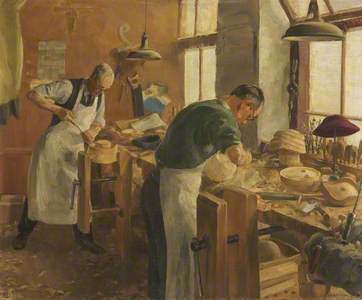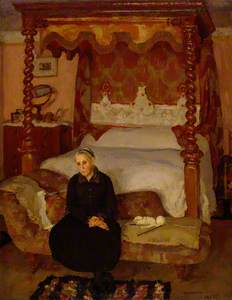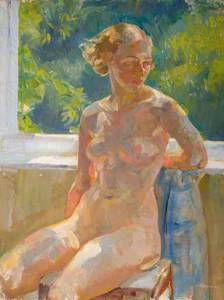There was a great deal of public interest when Tate recently acquired four paintings by Sylvia Pankhurst. Not only was she an important figure in the suffragette movement but she was an artist too! This fact had been overshadowed by her achievements in the historic struggle for women’s rights. Her combined passion for gender equality and painting was shared by her friend and fellow activist Amy Katherine Browning (1881–1978).
The two first met as young art students at the Royal College of Art. Later Browning worked alongside Pankhurst in the mounting of 'The Women’s Exhibition' in 1909 and 1916, in the latter producing portrait sketches of visitors to the show. Browning also created illustrations for The Woman’s Dreadnought, a feminist newspaper founded by Pankhurst in 1914. During the First World War, they campaigned together to raise money and provide work for women in the East End of London who faced hardship and struggle while their husbands were away at the Front.
Yet Amy K. Browning has remained a far less celebrated figure. She was born in Bedfordshire in 1881 and attended a small private school in nearby Luton. She soon displayed an aptitude for drawing and was encouraged to attend weekly drawing classes. In 1899, she secured a place at the Royal College of Art and gained a diploma in the teaching of art. Her studies were cut short in 1901 when family commitments forced her to return home as her mother was pregnant for the eighth time. However, she was able to resume her studies by 1903 and it was in this period that she became firm friends with Sylvia Pankhurst.
Nicknamed 'Brownie' by her contemporaries, she chose to sign her paintings 'A. K. Browning'. Like many other creative women, she preferred the fact that she was female to remain unclear. Her art developed in an English Impressionist style marked by assured painterly energy and a subtle sense of light and colour.
In 1913, she exhibited Chequered Shade at the Paris Salon winning a Silver Medal. In Britain, she became a regular exhibitor at the Royal Academy Summer Exhibition. Her work first featured in the 1906 exhibition and remarkably from there, she exhibited in another 60 of the annual summer shows.
In 1922, when the Paris Salon had resumed after the First World War, she won a Gold Medal for Lime Tree Shade.
Probably her most famous picture, this thickly impastoed oil painting of a girl and her dog under a lime tree is deeply evocative of an English summer. This painting was subsequently acquired by Ipswich Borough Council for their museum collection.
It is on show between 8th December 2018 and 5th May 2019 at 'Women 100' at Ipswich Art Gallery, an exhibition which casts a spotlight on the work of women artists in the collection. This show provides a rare opportunity to see a major group of Browning’s works brought together. Several paintings from private collections are displayed to celebrate her significant talent. Landscapes, portraits and intimate family scenes are at the heart of her vision.
The Suffolk countryside became an important subject after she married Thomas Cantrell Dugdale in 1916. They settled first in Wickham Market and later moved to Iken, near Snape. Several local landscapes feature in this exhibition. All possess vivid painterly brushstrokes and a sensitive awareness of the local light. Her husband features in domestic scenes such as Sunday Papers but when he died in 1952, she gave up the house in Suffolk and moved to a rented studio flat in Chelsea. Her love of the East Anglian landscape meant that she returned regularly on painting trips even into her nineties.
In an interesting parallel with Sylvia Pankhurst, she also depicted the lives of working people. While Pankhurst’s four paintings of factory workers have recently arrived at Tate, there is a fascinating group of Browning’s paintings in Stockport. After her husband’s death, she had very little money and her brother-in-law, a managing director of a hat factory in Luton, managed to secure a useful commission for Browning. She created a series of paintings depicting the hat making industry. These represent the various stages of the hat making process and include depictions of block-making, shaping, packing and sewing the hats. All are scenes of workshop and factory life and offer a different facet of the artist’s oeuvre.
Appropriately, they can be seen at The Hat Works in Stockport, a museum dedicated to the local hat-making industry. This led to a greater appreciation of her art in her home county and Luton Museum mounted a one-woman show of her work in 1954. This was followed by her election to the Royal Society of Portrait Painters at a time when very few women were elected.
It is intriguing to compare how we now remember Pankhurst and Browning. While Pankhurst’s fame rests on her social and political achievements, Browning’s art has maintained a determined focus on light, landscape and painting. Her style of English Impressionism has possibly been viewed as backward-looking alongside the ever-shifting rollercoaster of twentieth-century art but Amy Katherine Browning can now be seen to possess an assurance and conviction not only about the rights of women but also the importance of painting.
Michael Sheehy, illustrator, musician & Training Museum trainee
'Women 100' in on display at Ipswich Art Gallery from 8th December 2018 to 5th May 2019






















